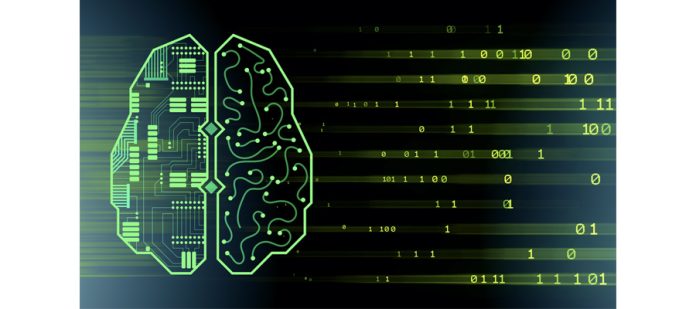By: Lavanya Singh, Technologies Writer
Machine learning, a potent field within artificial intelligence, empowers computers to learn from data and autonomously make predictions or decisions, without the need for explicit programming. It focuses on the development of algorithms and models that can automatically identify patterns, extract insights, and make informed predictions based on large datasets. By leveraging statistical techniques, mathematical optimization, and computational power, machine learning algorithms can process vast amounts of data and uncover complex relationships and trends.
Machine learning has revolutionized various industries, including healthcare, finance, marketing, and transportation. It is employed in diverse applications such as image and speech recognition, natural language processing, fraud detection, recommendation systems, and autonomous vehicles. By analysing historical data and learning from it, machine learning systems can make accurate predictions, detect anomalies, classify objects, and personalize user experiences.
The two main types of machine learning are supervised learning and unsupervised learning. Additionally, there are other learning paradigms like semi-supervised learning and reinforcement learning that further expand the capabilities of machine learning.
As technology advances and more data becomes available, machine learning continues to evolve, driving innovation and shaping the future of numerous industries. Its ability to automate processes, enhance decision-making, and enable predictive capabilities makes it a vital tool for solving complex problems in the modern world.
1. What is Machine Learning
Machine learning is a subfield of artificial intelligence, which focuses on the use of data and algorithms that allows software applications to imitate the way humans learn, gradually improving its accuracy.
The core principle behind it is that systems can acquire knowledge from data, recognize patterns, and make decisions with minimal human involvement.
2. Machine Learning History
The ideation of machine learning goes back to 1943 when logician Walter Pitts and neuroscientist Warren McCulloch published a mathematical paper mapping the decision-making process in human cognition and neural networks. The paper acknowledged each neuron in the brain as a basic digital processor and viewed the entire brain as a computational device. In 1949 Donald Hebb wrote, “The Organization of Behaviour” where he explains that Machine learning, in part is based on a model of brain cell interaction. In the book, Hebb’s theories on neuron activation and inter-neuronal communication are discussed. Subsequently, in 1950, mathematician and computer scientist Alan Turing introduced the Turing test, which requires a computer to deceive a human into believing that it is also a human being. Arthur Samuel’s computer program for playing checkers in the 1950s is referred as a major milestone for Machine Learning. Due to the limited computer memory available for the program, Samuel implemented a technique known as alpha-beta pruning. His design included a scoring function using the positions of the pieces on the board. The scoring function aimed to evaluate the probabilities of success for each side. To determine its next move, the program employs a minimax strategy, which eventually developed into the minimax algorithm. Arthur Samuel coined the phrase “machine learning” in 1952. It was characterized as “the field of study that gives computers the ability to learn without explicitly being programmed.”
3. Types of Machine Learning
There are four main categories under which machine learning can be broadly classified:
SUPERVISED LEARNING
Supervised learning is a human intervention heavy machine learning. Continuously, “labelled” input and output data is fed into human-trained systems, which receive real-time guidance, leading to improved accuracy with the inclusion of each new dataset. Human intervention is also required to provide feedback on the performance of the machine learning algorithm, facilitating its learning process over time. E.g., Classification Algorithms, Regression Algorithms
UNSUPERVISED LEARNING
Unlike the former, unsupervised learning requires less human intervention in a way that raw data that’s neither labelled nor tagged is processed by the system. It works by identifying patterns within a data set, grouping information based on similarities and differences. It is especially useful in customer and audience segmentation, as well as identifying patterns in recorded audio and image data. E.g., Clustering Algorithms.
SEMI-SUPERVISED LEARNING
As the name suggests, Semi-supervised learning offers a balanced mix of both supervised and unsupervised learning. The hybrid approach involves processing small quantities of “labelled” data in conjunction with larger volumes of raw data.
REINFORCEMENT LEARNING
In reinforcement learning, AI-powered computer software programs outfitted with sensors, respond to their surrounding environment — think simulations, computer games and the real world — to make decisions independently that achieve a desired outcome through trial and error, ultimately reaching optimal proficiency through positive reinforcement during the learning process. E.g., Q-Learning, Deep Reinforcement Learning
4. How does Machine Learning Work
Machine learning works by exploring data and identifying patterns. The process starts with inputting training data into the selected algorithm. Deep learning, neural networks and imitation games are all used to teach computer programs to “learn”.
5. Machine Learning Applications
Machine learning drives various applications such as chatbots and predictive text, language translation apps, personalized recommendations on platforms like Netflix, and the organization of social media feeds. It empowers autonomous vehicles and enables machines to diagnose medical conditions using image analysis. With its significant technological breakthroughs, machine learning has become instrumental in shaping modern advancements. It is being used for the new industry of self-driving vehicles. Some common ways in which the world of business is currently using machine learning are Analysing Sales Data, Real-Time Mobile Personalization, Fraud Detection, Product Recommendations, Learning Management Systems, Dynamic Pricing and Natural Language Processing.
6. Machine Learning Examples
Machine learning in today’s world is as omnipresent as the innate evolutionary psychology of humans and we’re loving every bit of it. Here are a few examples of the applications we use in our daily lives knowing little of the fact how machine learning is shaping these apps every day:
- Apple- Apple utilizes machine learning in its Face ID authentication system, employing image recognition to unlock mobile devices. Vision, a deep learning framework, powers Apple’s biometric technology by detecting and matching users’ facial features with existing device records.
- Waymo- Waymo’s self-driving vehicles employ machine learning sensors to process real-time data from the surrounding environment. This data helps guide the vehicles’ responses in various situations, such as detecting a red light or a pedestrian crossing the street.
- Yelp- Yelp relies on machine learning to analyse and categorize the vast number of photos uploaded by users on its platform. This technology enables Yelp to group photos into different categories, such as food, menus, interior, or exterior shots.
- Google Translate- Thanks to machine learning, the Google Neural Machine Translation (GNMT) system can effortlessly detect and switch between languages.
- Netflix- Netflix uses machine learning to analyse the viewing habits of its millions of customers to make predictions on which media viewers may also enjoy. The predictions form the basis for recommendations, influencing the selection of shows, movies, and videos that appear on each user’s homepage and watch-next reel.
7. Machine Learning Advantages
To someone not omniscient of the wonders of Machine learning, the things it can achieve is no less than magic.
A major incentive to machine learning is automation. The complex algorithms do the hard work for the user reducing human workload. It is more reliable, efficient, and quick. Machine learning models have exhibited remarkable adaptability by continuously learning, resulting in enhanced accuracy over prolonged periods of operation. This technology plays a role in almost every field, like hospitality, ed-tech, medicine, science, banking, and business.
8. Machine Learning Disadvantages
As perfect as the infrastructure of machine learning seems, there’s no shying away from discussing the other side of the coin and the tech’s limitations.
At its core, machine learning revolves around the identification of valuable data. Without a reliable data source, the outcomes may be inaccurate. The effectiveness of machine learning heavily relies on the data itself and its quality. It requires expensive resources and high-quality expertise to set up the required quality of infrastructure. Data stands as one of the fundamental pillars of machine learning. The collection of data has raised the fundamental question of privacy. The collection and utilization of data for commercial purposes have consistently been a subject of contention.
9. Future of Machine Learning
Machine learning and artificial intelligence (AI) technologies will remain in great demand in 2023, as their potential to foster significant innovations across various industries continues to be recognized. The AI market is predicted to reach $1,597.1 billion by 2030. There have been various ongoing researches and development to make the predictive analysis even more efficient.
Deep reinforcement learning- It is a combination of reinforcement learning and deep learning. Deep reinforcement learning utilizes unstructured data to make decisions aimed at optimizing a given objective. It can learn to maximize cumulative reward.
Few-shot learning (FLS)- It is a subfield of machine learning, offers the benefit of working with a limited quantity of training data. These models can be beneficial in healthcare to detect rare diseases with inadequate images into the training data.
GAN-based data augmentation- Generative adversarial networks (GANs) are popular in data augmentation applications and they can create meaningful new data by using unlabelled original data. A study about insect pest classification shows that GAN-based augmentation method can help CNNs perform better compared to classic augmentation method.








